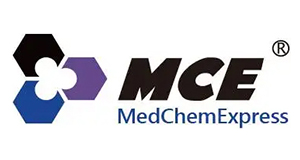Lithocholic acid, CAS 434-13-9
Lithocholic acid, CAS 434-13-9
SKU
MEXHY-B0172-10.1
Packaging Unit
10 mM/1 ml
Manufacturer
MedChemExpress
Availability:
loading...
Price is loading...
Product Description: Lithocholic acid is a toxic secondary bile acid that can promote intrahepatic cholestasis and promote tumorigenesis. Lithocholic acid is also a FXR antagonist and a PXR/SXR agonist[1][2][3][4][5].
Applications: Metabolism-sugar/lipid metabolism
Formula: C24H40O3
References: [1]Jenkins, D.J., et al., Effect on blood lipids of very high intakes of fiber in diets low in saturated fat and cholesterol. N Engl J Med, 1993. 329(1): p. 21-6./[2]Goldberg, A.A., et al., Lithocholic bile acid selectively kills neuroblastoma cells, while sparing normal neuronal cells. Oncotarget, 2011. 2(10): p. 761-82./[3]Matsubara, T., et al., TGF-beta-SMAD3 signaling mediates hepatic bile acid and phospholipid metabolism following lithocholic acid-induced liver injury. J Lipid Res, 2012. 53(12): p. 2698-707./[4]Yang R, et al. Metabolomic analysis of cholestatic liver damage in mice. Food Chem Toxicol. 2018 Jul 14;120:253-260./[5]Yu J, et al. Lithocholic acid decreases expression of bile salt export pump through farnesoid X receptor antagonist activity. J Biol Chem. 2002 Aug 30;277(35):31441-7.
CAS Number: 434-13-9
Molecular Weight: 376.57
Compound Purity: 99.99
Research Area: Cancer; Metabolic Disease
Solubility: DMSO : 250 mg/mL (ultrasonic)/Ethanol : 10 mg/mL (ultrasonic;warming;heat to 60°C)/H2O : 0.99 mg/mL (ultrasonic;warming;adjust pH to 11 with NaOH;heat to 60°C)
Target: Apoptosis;Autophagy;Endogenous Metabolite;FXR
Applications: Metabolism-sugar/lipid metabolism
Formula: C24H40O3
References: [1]Jenkins, D.J., et al., Effect on blood lipids of very high intakes of fiber in diets low in saturated fat and cholesterol. N Engl J Med, 1993. 329(1): p. 21-6./[2]Goldberg, A.A., et al., Lithocholic bile acid selectively kills neuroblastoma cells, while sparing normal neuronal cells. Oncotarget, 2011. 2(10): p. 761-82./[3]Matsubara, T., et al., TGF-beta-SMAD3 signaling mediates hepatic bile acid and phospholipid metabolism following lithocholic acid-induced liver injury. J Lipid Res, 2012. 53(12): p. 2698-707./[4]Yang R, et al. Metabolomic analysis of cholestatic liver damage in mice. Food Chem Toxicol. 2018 Jul 14;120:253-260./[5]Yu J, et al. Lithocholic acid decreases expression of bile salt export pump through farnesoid X receptor antagonist activity. J Biol Chem. 2002 Aug 30;277(35):31441-7.
CAS Number: 434-13-9
Molecular Weight: 376.57
Compound Purity: 99.99
Research Area: Cancer; Metabolic Disease
Solubility: DMSO : 250 mg/mL (ultrasonic)/Ethanol : 10 mg/mL (ultrasonic;warming;heat to 60°C)/H2O : 0.99 mg/mL (ultrasonic;warming;adjust pH to 11 with NaOH;heat to 60°C)
Target: Apoptosis;Autophagy;Endogenous Metabolite;FXR

 Deutsch
Deutsch










